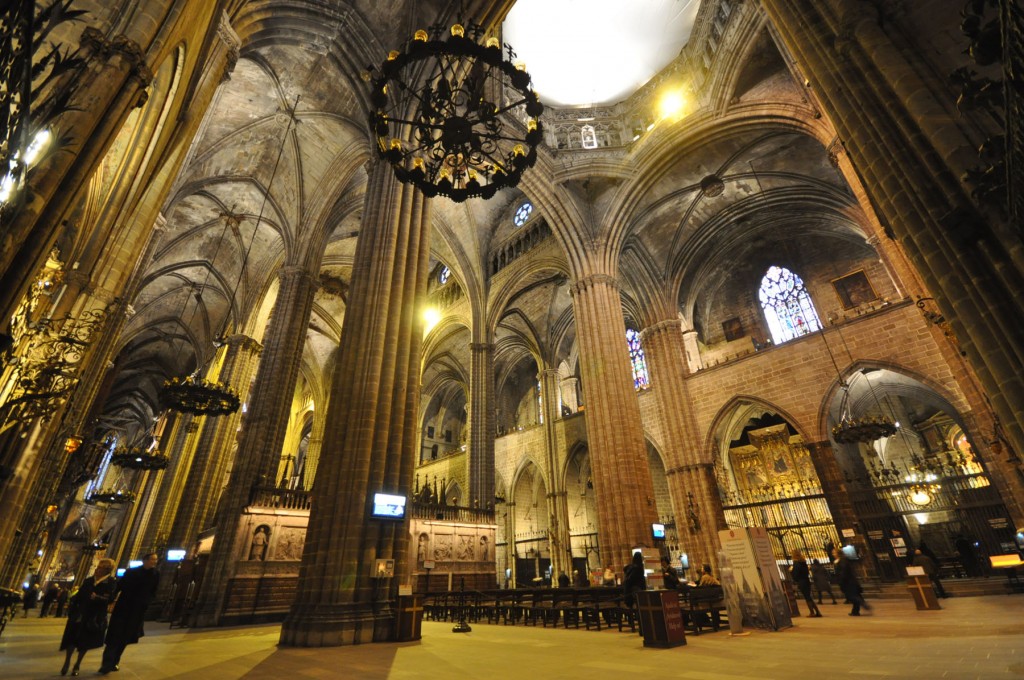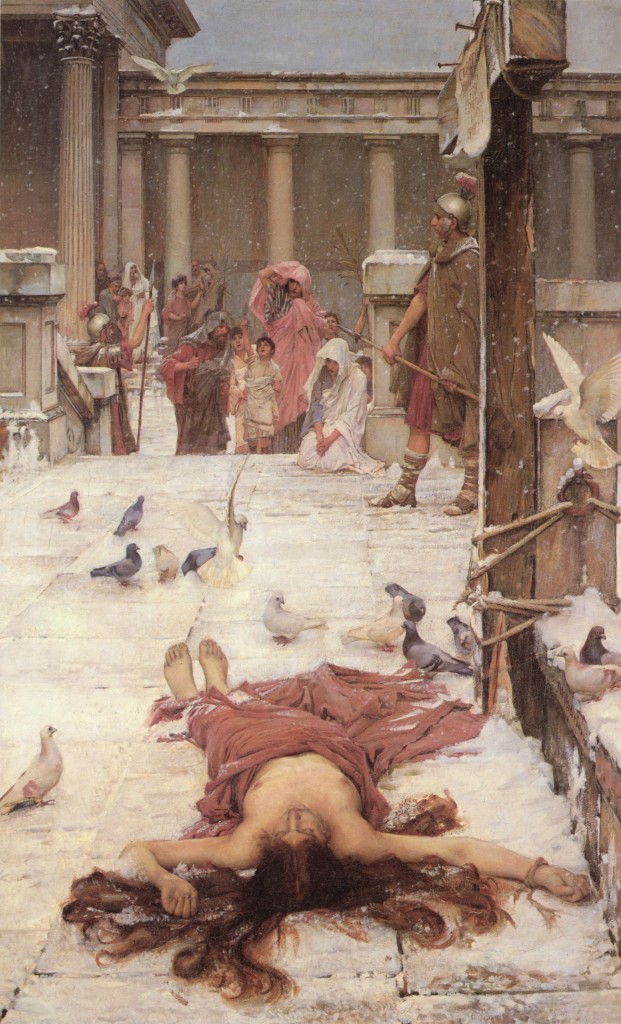Eulalia lived around 300 CE and is one of the youngest saints. At only twelve, she was martyred in Barcelona, Spain, for refusing to recant her Christianity and make offerings to the pagan gods. It is said that she suffered thirteen different tortures‚ including having her body torn with iron hooks, torches applied to her breasts and sides, and suffocation as her hair caught fire.
According to the legend, at the moment of her death, a white dove of peace emerged from her mouth and pure snow began to fall.
J.W. Waterhouse was a Pre-Raphaelite painter who famously depicted women from history and mythology. This is one of Waterhouse’s most unusual and dramatic compositions. In it, we see Eulalia after her death — the ground is covered in snow, the dove sits beside her, and she is prostrate on the ground. By placing all the background figures in the distance, and using the contrast of dark reds and browns against white snow, Waterhouse concentrated the viewer’s gaze on Eulalia. She is also surrounded by doves — symbols of the Holy Spirit — with one on the right ascending Heavenward.
Despite the horrific torture she is said to have experienced, Eulalia is portrayed almost untouched — her pose almost becoming seductive rather than a horrific death. The wooden cross to her right was placed as an allusion to her death by crucifixion instead of torture — a choice by Waterhouse to help lessen the severity of his subject. Such alterations were likely made because this painting secured his election as an Associate of the Royal Academy and was highly publicized for review.

The Cathedral of the Holy Cross and Saint Eulalia (Barcelona Cathedral, interior view), 13th-15th century, WikiCommons.
As the co-patron saint of Barcelona, Eulalia is honored through the dedication of the Cathedral of the Holy Cross and Saint Eulalia, where her body is entombed in the cathedral’s crypt. Construction of the cathedral occurred throughout the 13th to 15th centuries, with most of the work done during the 14th century.
The cathedral has a secluded Gothic cloister where thirteen white geese are kept. The number relates to her age when she was martyred and the thirteen different tortures she suffered before her death.

